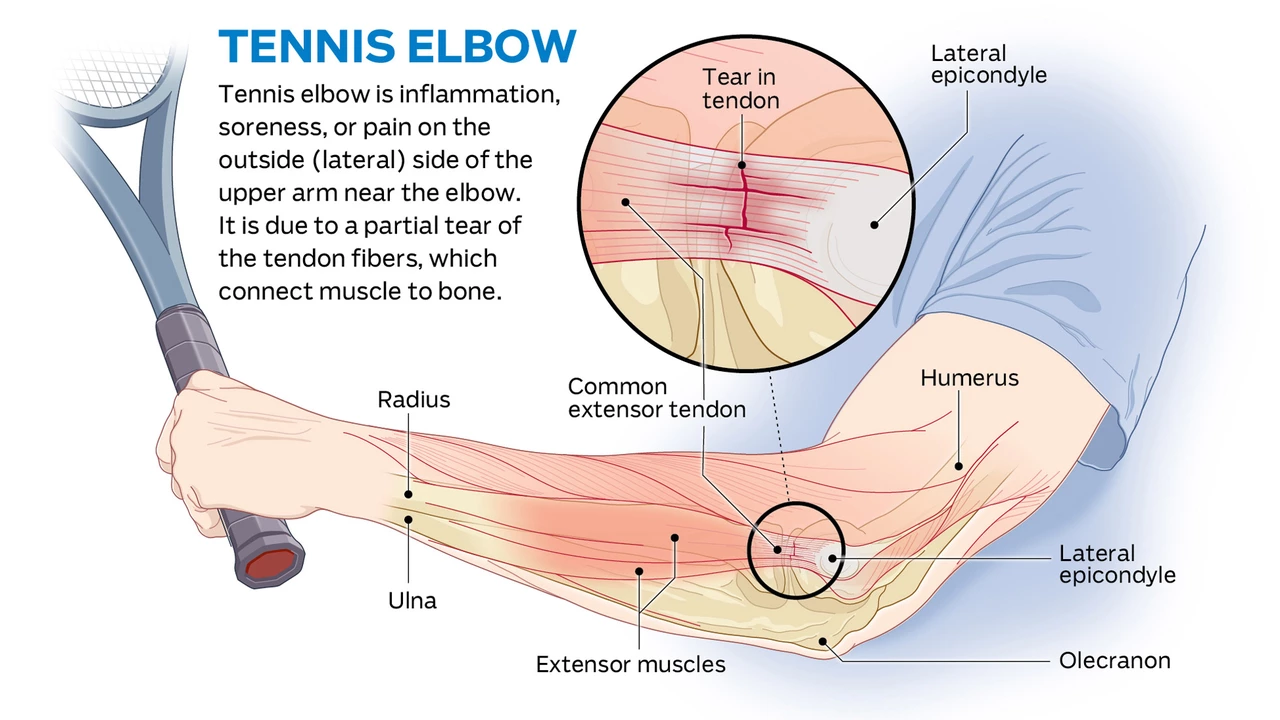Tennis Elbow Explained: How to Spot It, Ease the Pain, and Keep It Away
If you’ve felt a sharp ache on the outside of your elbow after a game or a long day at the office, you might be dealing with tennis elbow. It’s not just for tennis players – anyone who does repetitive arm motions can develop it. The good news? You can recognize it early, treat it at home, and take steps to stop it from returning.
What Exactly Is Tennis Elbow?
Tennis elbow, medically known as lateral epicondylitis, is inflammation of the tendons that attach to the outer part of the elbow. Those tendons help you lift, grip, and twist. When they’re overused, tiny tears form, causing pain that can spread down the forearm.
Typical signs include:
- A dull ache on the outside of the elbow.
- Pain that worsens when you grip a racket, shake hands, or lift a coffee mug.
- Weakness in the forearm, making it hard to turn a doorknob.
If any of these sound familiar, stop the activity that hurts and start the recovery plan.
Quick Ways to Relieve the Pain
First off, give your elbow a break. Rest doesn’t mean you become a couch potato – it means you avoid the motions that trigger the pain for a few days.
Cold therapy is another simple fix. Apply an ice pack for 15 minutes, three times a day, especially after you’ve used your arm. The cold reduces swelling and numbs the ache.
Over‑the‑counter anti‑inflammatory meds like ibuprofen can help, but use them as directed and only if you need the extra relief.
Gentle stretching is key once the worst of the pain eases. Try a wrist extensor stretch: hold your arm straight, palm down, and gently pull the fingers back with your other hand. Hold for 15‑30 seconds, repeat three times.
Strengthening comes later. A popular exercise is the “tennis elbow squeeze” with a soft ball. Squeeze for 5 seconds, relax, and repeat ten times. Do this a few times a day to rebuild tendon strength.
Preventing Tennis Elbow Before It Starts
The best cure is preventing the problem. Here are easy habits to adopt:
- Warm up your arm and wrist for at least five minutes before playing or lifting.
- Use a grip that isn’t too tight. On a racket, a smaller grip size can lower strain on the tendons.
- Mix up your activities. If you spend hours typing, take a short break every 30 minutes to roll your shoulders and stretch your forearms.
- Strengthen forearm muscles with light resistance bands a few times a week.
If you’re a regular tennis player, consider a coach’s advice on technique. A faulty swing can overload the elbow. Small adjustments in footwork or racket angle often make a huge difference.
Finally, if pain sticks around after two weeks of home care, see a physiotherapist or sports doctor. They can offer targeted treatments like ultrasound, shock‑wave therapy, or a custom brace that takes pressure off the tendon.
Remember, tennis elbow isn’t a permanent badge of honor. With the right rest, simple exercises, and smart habits, you can get back to your game—or your daily tasks—without that nagging ache hanging over you.
Well folks, tennis elbow is a bit like your mother-in-law's visit, it can feel like it lasts forever! But in reality, it usually hangs around for 6 to 12 weeks, depending on the severity and your treatment plan. But hey, like a bad sitcom, some cases can drag on for up to a year or more. Don't forget, a good physiotherapy program is like a great playlist - it can drastically shorten the "airtime" of this painful nuisance. So, keep smiling, because even a tennis elbow is not as persistent as a door-to-door salesman!
Continue reading...
Tennis elbow is a painful condition caused by overuse of the arm, forearm and hand muscles. This article outlines some common mistakes that should be avoided when attempting to heal from the condition. These include not resting and icing the affected area, not using a brace, using a brace incorrectly, not engaging in physical therapy, and not taking medication. Taking these steps and following the advice of a doctor will help to ensure a speedy and successful recovery.
Continue reading...




